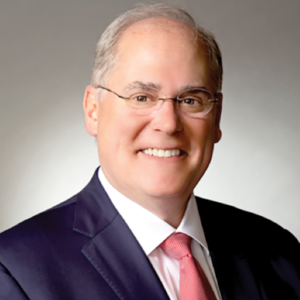By Evelyn Pyburn
Like so many Montanans who left the state to seek opportunity, Blain Bogar has returned. He returned to Billings last February to open a branch of the company he started in Las Vegas, Big Sky Wealth Management. It’s a move he has always contemplated.
Bogar started Big Sky Wealth Management as a firm with LPL Financial in Las Vegas, Nevada, where for the past 14 years he has been building customized investment strategies for clients.
Bogar went to Las Vegas to start the business, as he came to understand, after launching his career in Billings — that there would be greater opportunities in a more populated area. But even as he moved, “I never really left Billings,” said Bogar, “I will always be a Montanan.”
In opening his office at 2475 Village Lane in Billings, Bogar created a partnership with Julie Finnicum. It was an unexpected reunion for the two professionals, who actually began their careers just a few years apart with Piper Jaffray in Billings. Although they casually knew each other— that they should end up in a business partnership is something of a surprise. But through the recommendation of a mutual friend they reconnected and discovered that they hold similar philosophies about life and business which creates the perfect basis for a sound company.
They have a mutual creed, which is so important to them that it is clearly posted in their office. Called “Attitude,” written by Charles Swindoll; it states, “The longer I live, the more I realize the impact of attitude on life. Attitude, to me, is more important than facts. It is more important than the past, than education, than money, than circumstances, than failures, than successes, than what other people think, say or do. It is more important than appearance, giftedness or skill. It will make or break a company… a church… a home. The remarkable thing is we have a choice every day regarding the attitude we embrace for that day. We cannot change our past… we cannot change the fact that people will act in a certain way. We cannot change the inevitable. The only thing we can do is play the one string we have, and that is our attitude… I am convinced that life is 10% what happens to me and 90% how I react to it. And so it is with you… we are in charge of our Attitudes”
Bogar said that he knew he needed to join forces with someone he could count on when he is not in Billings, since he is continuing his business and relationships with his clients in Las Vegas.
Big Sky Wealth Management is a member of LPL Financial, a San Diego based company that offers advice and guidance to independent advisors and firms and through which clients make transactions. LPL is the largest broker dealer in the country.
Bogar has been a member of LPL for 14 years during which time they have doubled in size. They offer no products, just service and support and mentorship for their members. “They allow us to put the client first in making transactions that are best for our client. We can do more than most, for our client,” said Bogar. In not having any products to sell or other agendas, Bogar said, “I am on the same side as the client.”
The time is right to open a Billings office, said Bogar, pointing out how much the city has grown in the interim. He is excited about being able to bring his family, his wife, Nataliya and daughter, Melaniya, to Billings and to be able to be more available for clients with whom he began business 18 years ago.
Both Bogar and Finnicum come from agriculture backgrounds – something they don’t think is serendipitous in shaping their lives. Few life styles instill the kind of work ethic and integrity that comes from the hard work and reality checks involved in working on a farm or ranch.
Julie (Hughes) Finnicum is one of five children in a long-standing Montana ranching family at Grass Range.
As a mother of three children, it was a real challenge for her to get her degree from MSU-Billings in business administration. She commuted from Grass Range every day.
She began working as an intern with Piper Jaffray in 1999, becoming licensed in 2000. Finnicum is a Certified Financial Planner (CFP©). She continued at Piper Jaffray until it was purchased by UBS. She moved on to another firm, gaining more experience. She said she discovered that the business is very challenging. At times it was “learning by fire.” Some firms are very competitive and impose many frustrating restraints on serving clients, which left her looking for alternatives. It’s why she jumped at the opportunity to join Bogar. “I believe in treating people the way you want people to treat you,” she said. That’s her mission with Big Sky Wealth Management.
Bogar was born in Billings, where his father had an accounting firm on First Avenue North. “I got my business acumen from my Dad,” said Bogar. Bogar’s Dad, who died a couple years ago, was a tough taskmaster. He not only taught his kids about sound economics but he gave them the opportunity to learn practical, hands-on, life experiences, living and working on a ranch near Wolf Point. The farm remains in the Bogar family.
“He wanted us to grow up the way he grew up,” said Bogar, who filed his first 1040 form at the age of 12. “I appreciate that now. Growing up on the farm was so wonderful in ways I didn’t realize. When you can see the fruits of your labor, there is satisfaction in that, which never goes away,” said Bogar.
Bogar went to Dawson College for two years, then attended MSU-Billings at the same time Finnicum was on campus where they both earned similar awards for “outstanding achievement” upon graduation in 2000 and 2001. He later earned his MBA from the University of Montana in Missoula. Bogar went to work with Piper Jaffray just one year before it was purchased by UBS. He remained with UBS until he decided it was time to start his own business in Las Vegas after the financial crisis in 2009.
Among the insights Bogar has gained in his business career, is that the most important things is to listen. “No two clients are the same in what they hope to do and what their goals are. We listen to our client and offer solutions … We want the client involved.”
Bogar underscored the importance of a financial adviser in saying that “It’s harder to preserve, manage and pass on wealth than it can be to earn it.”





